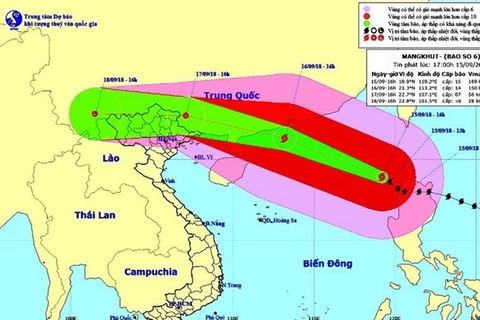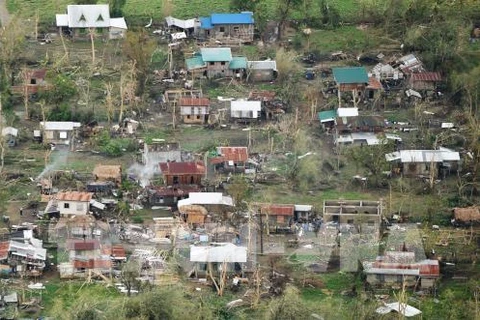 Rescuers brought bodies of victims out of a mud slide side in Baguio, the Philippines, on September 16. (Source: AFP/VNA)
Rescuers brought bodies of victims out of a mud slide side in Baguio, the Philippines, on September 16. (Source: AFP/VNA) Hanoi (VNA) - Philippine and Chinese authorities are still counting the death toll and damage caused by Typhoon Mangkhut, the strongest storm in the world in the last two years.
Mangkhut struck the Philippines on September 15 and weakened from a typhoon to a tropical storm as it moved deeper into southern China on September 17, with rain and strong winds expected to continue through September 18.
By the end of September 17, it was reported the death toll in the Philippines, mostly on its northern island of Luzon, amounted to 65; and the number of people missing was rising.
Many of the missing were gold miners and their families feared they were buried in a landslide after seeking shelter in a bunkhouse-turned-chapel in Itogon town, in Benguet province. Rescuers had so far found 11 bodies from a muddy mound covering the shelter. The chance of finding survivors was projected at 1 percent.
The storm also hurt the country’s production of vegetables, rice and corn with the harvest season just a month away.
The storm slammed into southern China, including Guangdong province and the Hong Kong and Macau special administrative regions, on September 16.
The country’s meteorological administration said Mangkhut was one of the 10 biggest storms to hit southeast China since 1949. Millions of people were evacuated from the typhoon, which caused floods, damaged buildings, uprooted trees and suspended traffic. It led to the first ever closure of all 42 casinos in Macau.
Locals are now recovering from the havoc. The traffic flow has resumed in Guangdong, where eight people were killed and 951,000 evacuated during the storm. Hong Kong has begun its efforts to clear the streets, with public services and schools expected to reopen after September 18.-VNA
VNA























